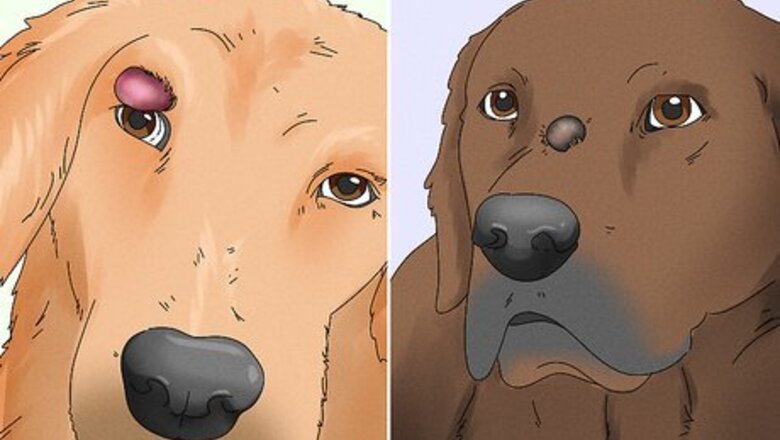
views
X
Trustworthy Source
American Kennel Club
The American Kennel Club (AKC) is a purebred dog pedigree registry in the United States. The AKC advocates for the responsible ownership of dogs and promotes purebred dog events, such as the Westminster Dog Show.
Go to source
It can be really concerning when one ruptures, especially if you aren’t sure what caused the cyst in the first place. Don’t worry! Cysts are very easy to manage and care for with a vet’s help. Here are some fast facts and recommendations to help your dog heal and recover.
Background

Dogs can develop different kinds of cysts. True cysts develop near glands and often form on a pup’s eyelids. Follicular, or epidermoid cysts, form in your dog’s hair follicles. Sebaceous cysts are also found around your pet’s hair follicles, and especially likely to get infected. Other dogs may have false cysts, which usually form after some type of injury. Most cysts have a “secretory lining,” or a special lining that surrounds the entire cyst. False cysts don’t have this type of lining, and they only appear in dead tissue. Dermoid cysts are a rare type of cysts that a few pups develop before they’re born—chances are, this isn’t the kind of cyst your dog is dealing with.
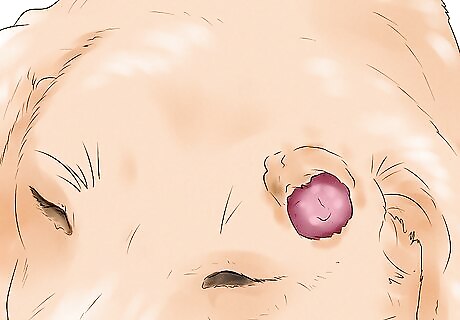
Sebaceous cysts are the type that commonly burst. When they get big enough, the cyst may burst due to its own pressure. These cysts are generally harmless, but they can get infected if not cared for properly.
Causes

Sebaceous cysts form when hair follicles get blocked. Your pup naturally secretes sebum from their oil (sebaceous) glands, which spreads onto their hair and skin. When the hair follicle gets covered with debris and dirt, this new sebum has nowhere to go, and ends up forming a cyst. Over time, these cysts can grow bigger and bigger as they fill up with extra secretions.
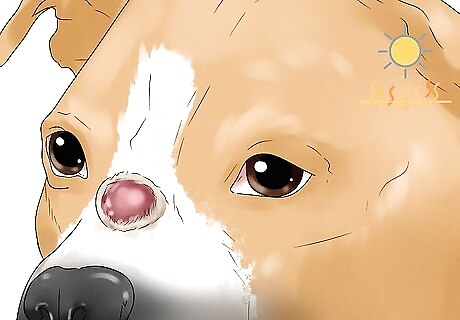
Injury, pressure points, and sun damage can also lead to cysts. Follicular cysts usually form after some type of damage to the hair follicle, or when a pore gets blocked. In a similar fashion, true cysts appear when the sweat gland gets blocked off. False cysts, on the other hand, tend to pop up when your dog has a bad reaction to a shot. Other causes could be abscesses, tumors, or allergies. Talk to a vet to determine the underlying cause.
Symptoms
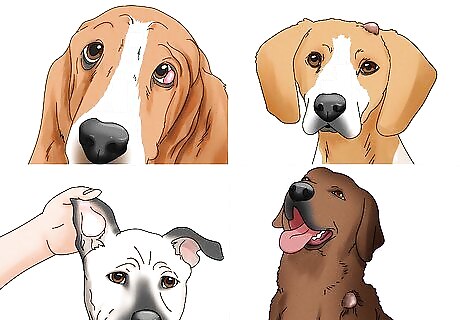
Follicular cysts appear on or beneath your pet’s skin. These cysts are round and have a bluish tint. You’ll probably find this type of cyst on your dog’s head, trunk, or neck, where you’ll see a gray or yellow, cheese-like substance leaking out. Unfortunately, this cyst tends to smell bad once it gets infected.
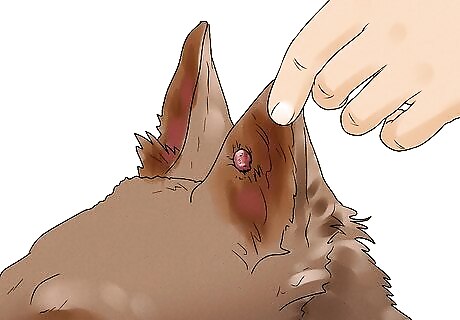
True cysts pop up near your pet’s eyes or ears. They usually form a lump- or sac-like shape, and they typically look blue or dark. These cysts are filled with a yellow fluid.

Sebaceous cysts develop along the top of the skin. These cysts appear white or blue. When they rupture, you’ll notice a brown or gray-white discharge that looks similar to cottage cheese. You’ll probably find these cysts on your dog’s neck, torso, upper legs, or head.
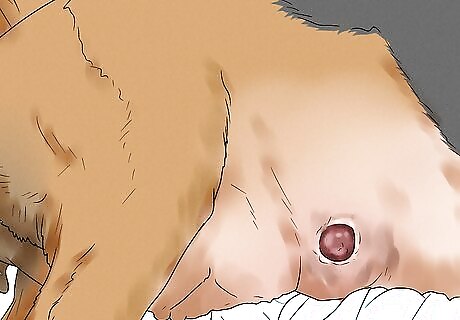
False cysts develop after an injury. These cysts are dark in color and are actually filled with blood. EXPERT TIP Ray Spragley, DVM Ray Spragley, DVM Veterinarian Dr. Ray Spragley is a Doctor of Veterinary Medicine and the Owner/Founder of Zen Dog Veterinary Care PLLC in New York. With experience in multiple institutions and private practices, Dr. Spragley’s specializations and interests include non-surgical management of cranial cruciate ligament tears, Intervertebral Disk Disease(IVDD), and pain management in osteoarthritis. Dr. Spragley holds a BS in Biology from SUNY Albany and has a Doctor of Veterinary Medicine degree (DVM) from Ross University School of Veterinary Medicine. He is also a Certified Canine Rehabilitation Therapist (CCRT) through the Canine Rehab Institute as well as a Certified Veterinary Acupuncturist (CVA) through Chi University. Ray Spragley, DVM Ray Spragley, DVM Veterinarian Report new skin masses to a veterinarian. Note any abnormal or rapidly growing skin masses during wellness exams with your vet. Though most are benign lipomas or cysts, the vet may aspirate cells or biopsy tissue to see if cancer is present and evaluate if removal or further treatment is needed.
Treatment
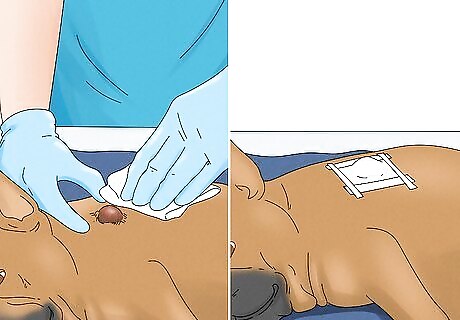
Clean and bandage the ruptured cyst temporarily. Sometimes, a cyst can open, or “ulcerate,” without actually bursting. If this happens, clean out the cyst and carefully wrap it up with a clean bandage. Don’t try to pop or remove the cyst yourself, though. You can clean the area with warm tap water or a warm saline mixture made with 1 tsp (5.9 g) of salt and 2 c (470 mL) of distilled water. Don’t use any shampoo, soap, alcohol, hydrogen peroxide, or other substance to clean the area, unless your vet specifically suggests it.
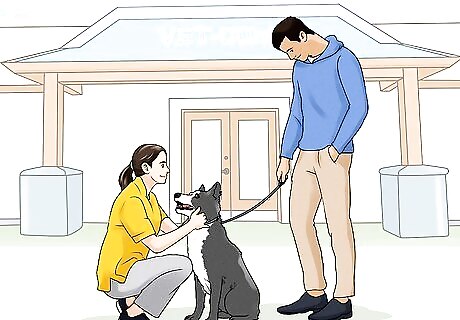
Take your dog to the vet as soon as you can after the cyst ruptures. There, veterinary professionals may remove the cyst with a laser. Vets won’t usually squeeze or drain a ruptured cyst since that won’t get rid of the blockage completely and could cause the cyst to reform. After the surgery, keep your pet in a quiet, closed-off area. Follow your vet’s after-care instructions; you may need to give your pup some special medication, or change their bandages regularly.
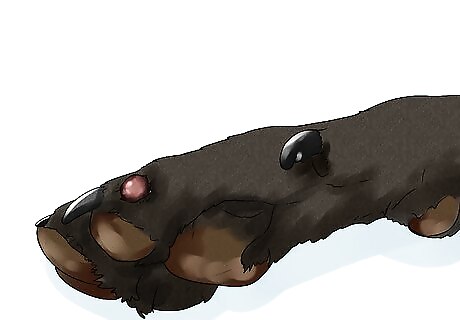
Remove cysts from your dog’s toes through surgery, a CO₂ laser, or therapy. During surgery, a vet will physically remove the cysts and stitch your dog’s toes together while the area heals. With a CO₂ laser, your vet will vaporize the cysts without hurting the rest of the paw. For a more long-term treatment plan, vets might treat the cysts with steroids and antibiotics. Antibiotic regimens can last for at least 6 weeks.
Prognosis
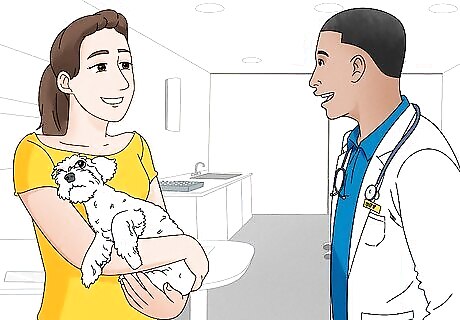
Fortunately, cysts go away with treatment. After a vet-recommended treatment, your dog should be able to fully recover. Always follow your vet’s recommended aftercare, so your dog doesn’t come down with an infection.
Additional Info
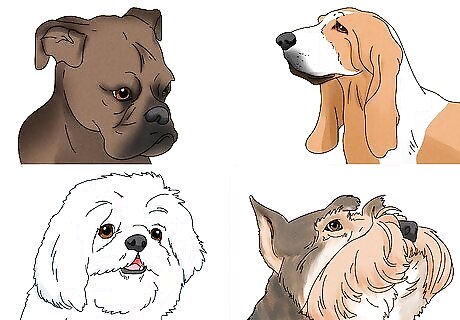
Certain dog breeds are more likely to develop cysts. Boxers, Shih Tzus, Basset Hounds, and Schnauzers are genetically more likely to develop follicular cysts. Hairless breeds, like the Chinese Crested Dog and Mexican Hairless Dog, may also develop follicular cysts since their hair follicles are so inactive. Rhodesian Ridgebacks and Kerry Blue Terriers are more genetically likely to get dermoid cysts. Labradors, Cocker Spaniels, Poodles, and Schnauzers are also prone to cysts.


















Comments
0 comment